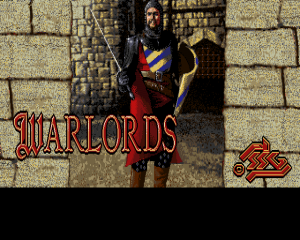
The first “Warlords” was created in 1989 by Steven Fawkner, and published by Strategic Studies Group (SSG).
“Warlords” is a fantasy based war-game written by Steve Fawkner. It was the first game he published commercially.
The game featured eight different clans battling for the control of a mythical land called Illuria: Sirians (white), Storm Giants (yellow), Grey Dwarves (orange), Orcs of Kor (red), Elvallie (green), Horse Lords (light blue), Selentines (dark blue) and Lord Bane (black). Each clan started in a differing location on the map and was proscribed differing strength and weakness. These differences demanding individual strategies coupled with the games overall balance were part of its appeal. The goal of the game was to rule the land of Illuria by defeating the other clans and capturing or razing cities. On their turn the player could move armies, review their cities adjusting production and send their heroes to explore or make allies.
It supported both single and multiplayer, allowing up to eight players taking turns hot seat style. Clans not played by individuals would be played by the computer. The game was praised for its AI for its computer players. More than the smart path finding for armies the computer controlled clans showing a gift for human style strategy. In designing the AI for the computer player they created it so it simulates a sense of human intuition.
The description of the clans for the manual were written by Gregor Whiley from SSG. He provided them all with a sense of distinct personality.
1. The Sirians (White)
The Sirians are Knights of a one-time chivalrous Order, dedicated to spreading the worship of their God to all of Illuria. Conversion by the sword is their favoured, (and some say their only), method of spreading the good word. their capital city is Marthos, on the southern edge of Eastern Sulador.
2. The Storm Giants (Yellow)
The Storm Giants are a race of powerful twelve foot tall giants, whose capital city, Stormhiem, is located on the peak of storm Mountain, in Western Sulador. The Storm Giants despise all those shorter than themselves, and have vowed to purify Illuria of what they see as an infestation of minuscule pests.
3. The Gery Dwarves (Brown)
The Grey Dwarves are a hardy folk, living in the city of Khamar, which is found in the Niroth Mountains in Central Lauredor. They desire to mine and exploit all the treasures of Illuria without let or hindrance. The surface dwelling races of Illuria are uniformly regarded as an obstacle to this grand ambition.
4. The Orcs fo Kor (Red)
In the city of Kor, in far off Huinedor, live a degenerate race of Orcs, led by a vile creature known as the Great Orc. Years of being the object of both derision and disgust to the other races has bred a terrible resolve. They will stop at nothing to spread their bloody-minded rule over all of Illuria. The rest of Illuria regards the term ‘degenerate’, when applied to Orcs, as redundant.
5. Elvallie (Green)
Elvallie is the name of a forest and a city and the people who dwell therein. It is the homeland of the Light Elves of Illuria, in Central Sulador. An arrogant race, they believe that only they are fit to live in harmony with the land. They consider the removal of all other sentient races from Illuria to be merely sound ecological practice.
6. The Selentines (Dark Blue)
The Selentines are a cruel empire of humans, whose capital is Enmouth, on the Western edge of Lauredor, by the Paramer Sea. They are a great naval force, and will miss no opportunity to spread their rule into new lands. They also regard all trees as ships that are simply yet to be constructed.
7. The Horse Lords (Light Blue)
The Horse Lords are a wild people, living on the plains in Eastern Lauredor, between the White and Nirnoth Mountains. Their capital city is Dunethel, where they can usually be found amassing great legions of cavalry. They covet all the lands of Illuria, and consider it the height of achievement to stable their horses in the ruins of other civilizations.
8. Lord Bane (Black)
Lord Bane is an evil force, lurking in his citadel in the encircling mountains of Argundor. His legions include all sorts of warped races, such as Dark Elves, Men, Ogres and Orcs. Tradition and ambition both decree that he attempt to enslave all of Illuria.
Version Information
Fawkner sent a copy of his original game to SSG who dismissed it as they were not interested in fantasy games. Ian Trout however gave a copy to his ten year son to look at. His son keenly played the games and then championed it to his father, so SSG convinced of its potential called Fawkner.
Although the demo that Fawkner sent SSG had quite resolved gameplay the team at SSG spent several months working with Fawkner on the game before release. Roger Keating, famous for his AI programming, worked on the code with Fawkner doing additional design and programming on the games AI and movement.
SSG wanted to add ‘fog of war” to the original “Warlords”. It was included in “Warlords II” (1993).
In reflecting on his influences in creating Warlords Fawkner cites “Dungeons and Dragons” in particular the “Dragons of Glory” board game that TRS packed with game module booklet as inspiration for setting and visuals. Mark Baldwin’s simple and accessible strategy game “Empire” (1988) was a big influence in making a game that could offer complex play but was quick and easy to learn. The shifting between the top down world maps and the 2.5D battles was inspired by of Mike Singleton’s celebrated “Lords of Midnight” for the ZX Spectrum.
The games success let to a series of later games. ‘Warlords II’ 1993 expanded the system, allowing hidden maps, new and different armies and more options, such as creation of alliances and new maps. It introduced the ‘fog of war’ feature and included an editor. “Warlords II Deluxe” — was released in 1995 allowing for customisation of tile sets within the editor taking advantage of the sharing of scenarios now possible on the internet “Warlords III” followed in 1998. “Warlords IV” was released in 2003.
“Warlords” for the Macintosh is part of the Apple Collection held at Museum Victoria.
Game Meta
Other Names
Country
Additional Creators
Value Chain
Screenshots
- Amiga Box Art: Front
- “Let Play Begin” : Amiga
- Player Setup: Amiga
- Starting Screen: Amiga
- Screen Shot: Amiga
- Get Reports: Amiga
- Set Production for home town: Amiga
Box Art
- Amiga Box Art: Front
- Amiga Box Art: Back
- Amiga: Disk 1
- Macintosh Box Art:Front
Media
- Amiga Action 20, May, 1991, p.94
- Amiga Action 20, May, 1991, p.95
- Amiga Computing 37, June, 1991, p.54
- Amiga Computing 37, June, 1991, p.55
- CU Amiga, May, 1991, p.85
- Amiga Joker, April, 1991, p.81
- Amiga World, June, 1991, p.70
- Amiga World, June, 1991, p.72
- Amiga Users International
- CU Amiga, May, 1990
- Datormagazin, vol. 4, Feb, 1991, p.79
- Datormagazin, Vol.6, March, 1991
- Ad, Run 5, Issue 6
Manuals & Walkthroughs


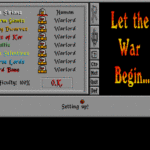


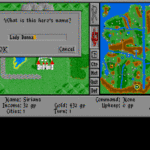
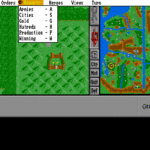

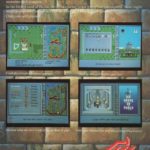


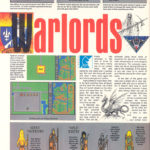

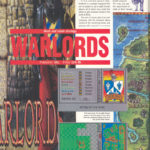








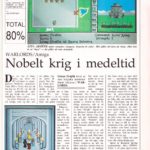

This was my first real game addiction. I fondly recall thinking about moves I would make when I got home from school.
My passion for strategy games, especially turn based ones has not left me and I owe it all to this game.
Yeah, that was my first “just one more turn” experience ?
Really cool game.
This was my first computer strategy game addiction. In 1991/1992 it was our nightly competition between several of us working the night shift on the switch at the White House. Great memories. I’d love to be able to play it again today in its original form.
I remember playing this game as a kid! My dad and brother graciously humored me, and now that I read this, I realize that they must have been very patient to put up with me joining them! Orcs of Kor were my favorite. Would love it if an app version of this game came out! I get serious Warlords cravings!